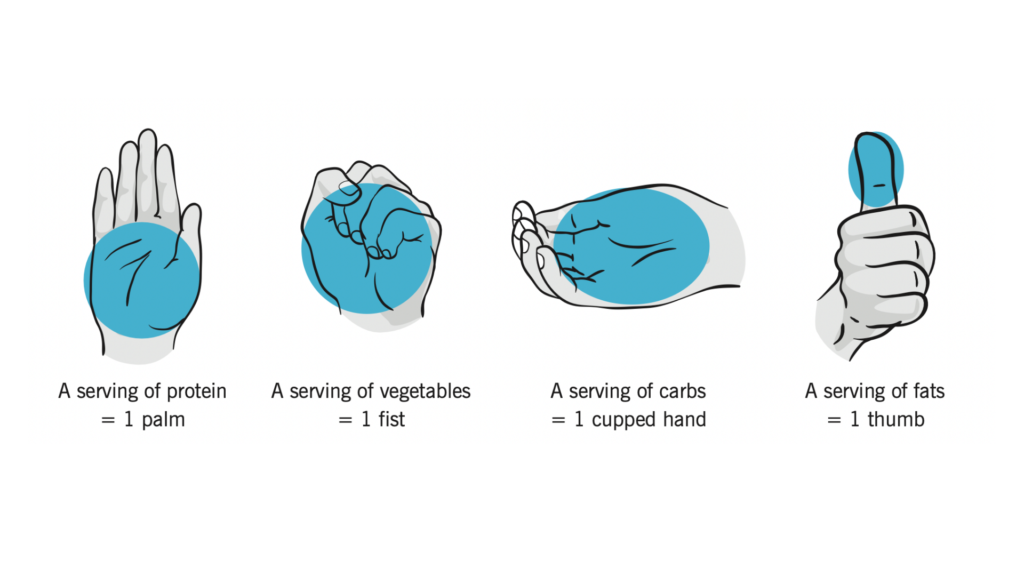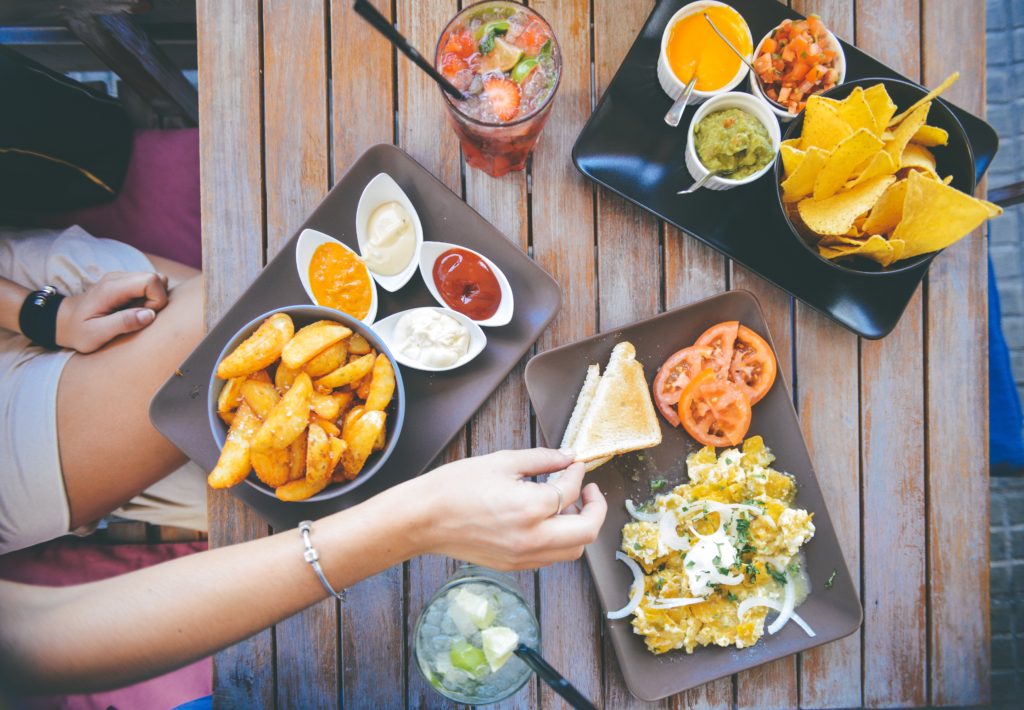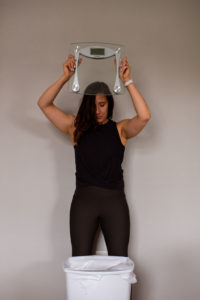I discuss this topic a lot in coaching sessions because journaling food you didn’t prepare can get very confusing for people. You have less control over meals eaten outside of the home and therefore you have to estimate a bit more. It’s my job to teach you how to do this in a way that is fairly accurate but not obsessive or restrictive!
How to do it
While I recommend that most clients use a food scale at home, I have never encouraged anyone to bring a food scale to a restaurant or friend’s house. In these situations, I feel the hand method is a great way to estimate your portion sizes.
What is the hand method?

Using the hand method makes logging food at restaurants so much easier. Not only does it give you portion sizes to aim for, but if you continue to use this guide you’ll know you always have a balanced plate! Here’s how we put this into practice:
- Protein: a palm size for most women should be logged as 3-4 ounces, for most men 5-6 ounces.
- Vegetables: a fist of raw veggies should be logged as 1 cup. A fist of cooked veggies would be 2 cups.
- Carbohydrates: a cupped handful of carbs is typically equivalent to 1/4 cup when logging. Often restaurant portions will be 3-4 times this amount, so log accordingly.
- Fat: a thumb size is equal to roughly 1 tablespoon. Use this to estimate items like sour cream, cheese, and guacamole. I would also recommend adding 1 tablespoon of oil for any meal out, as most restaurants are pretty liberal with their oil and/or butter.
A note on frequency
It’s important to note here that I recommend eating as many meals at home as possible, especially if trying to reach a specific goal in a short timeframe. Any reduction in restaurant meals could be beneficial for you in terms of reducing total calories, saturated fat, and sodium and increasing fiber. Ultimately I encourage clients to limit takeout (this includes the Starbucks drive through for breakfast, too!) to 2-3 times per week max.

Is this realistic for you? That’s the question. If it’s not, there is nothing inherently wrong with ordering in or dining out multiple times a week. You just need to understand that you might require a little more specificity with logging in order to reach your goals if you are dining out more frequently. It also might take a bit longer to get to those goals because of this. However, because I personally eat out so infrequently, I am comfortable letting these logs be more of a guess than an exact science.
Looking for more dining out tips? Check out my recent blog post with some common mistakes, or head over to my “this or that” posts on instagram for healthier fast food options!



